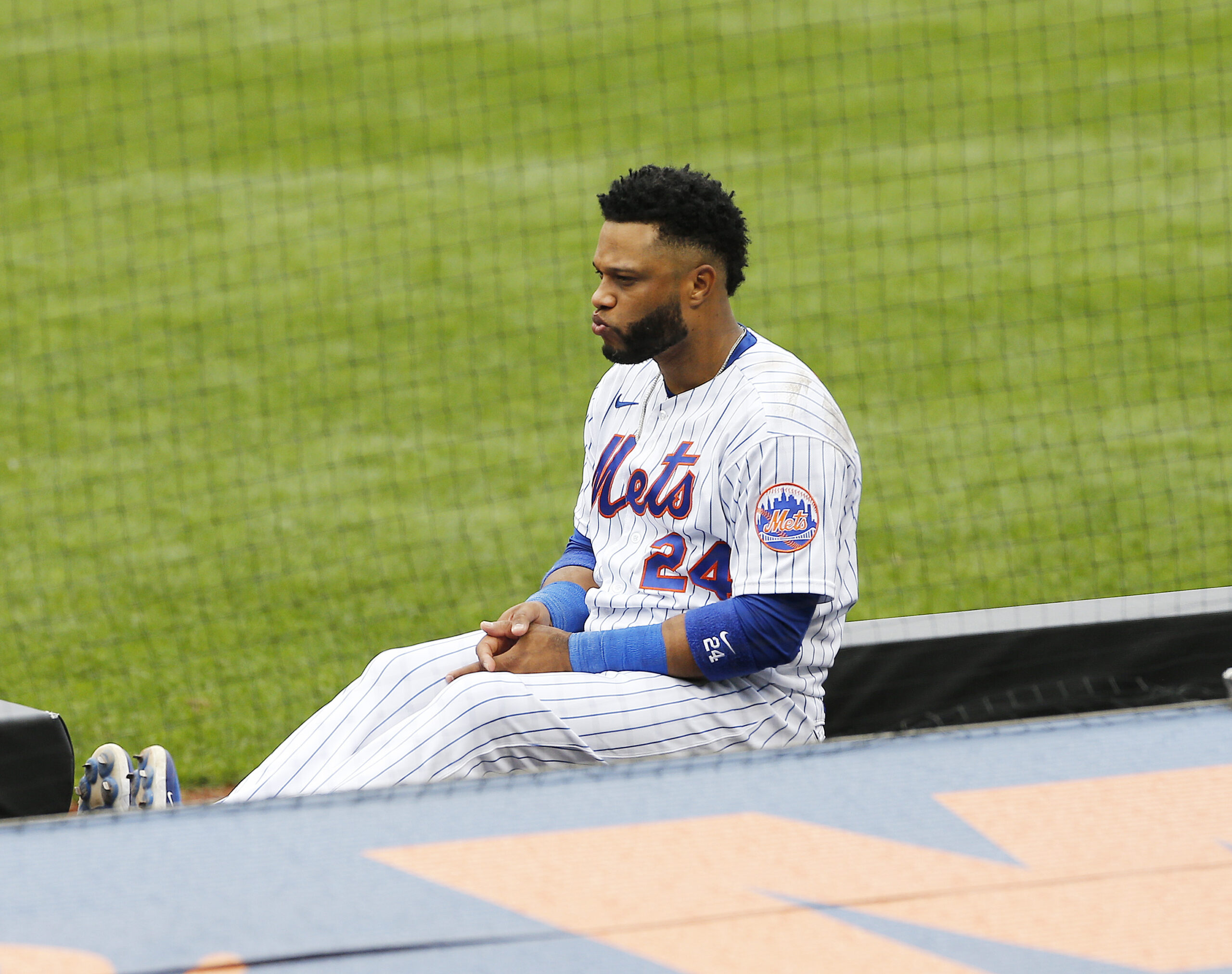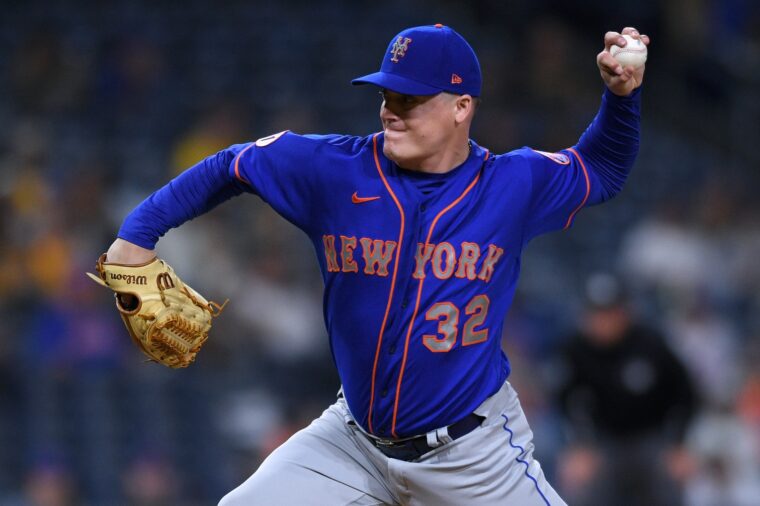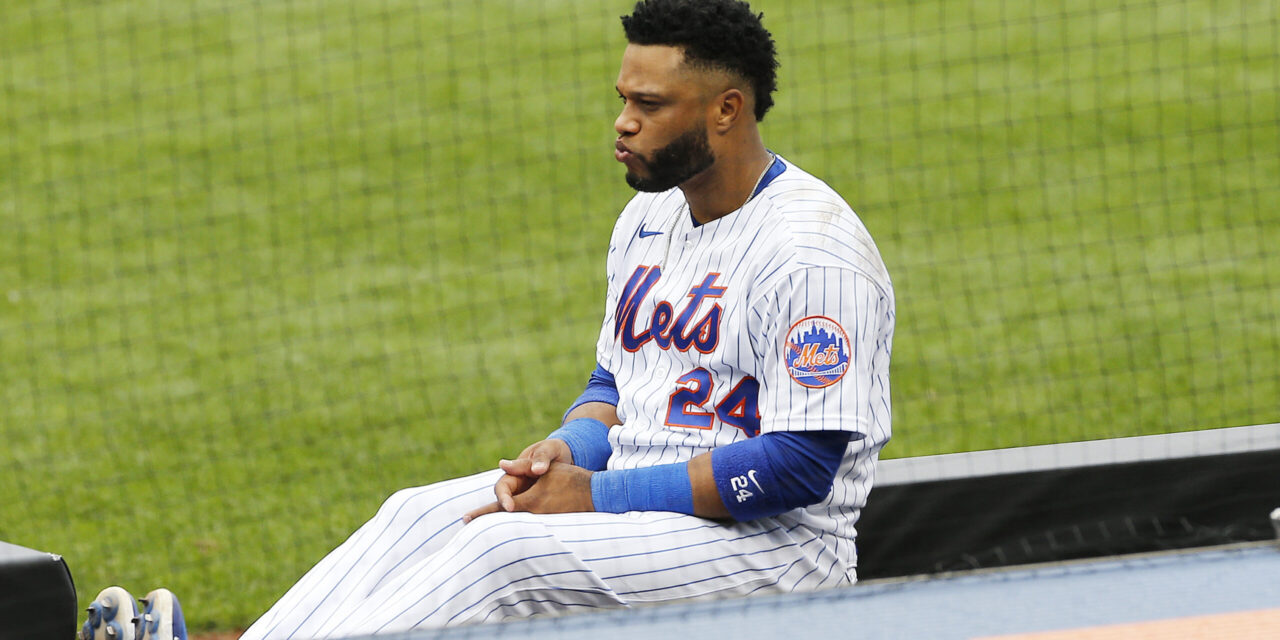
Credit: Andy Marlin-USA TODAY Sports
With Jarred Kelenic and the Seattle Mariners coming to town, many will attempt to re-litigate the shocking trade which sent Kelenic to the Seattle Mariners organization as a part of a trade package for Robinson Cano and Edwin Díaz. Of course, 2022 performances invite revisionist history here.
This season, Díaz has clearly been the top performer in this trade. Through 14 appearances, he is 1-0 with seven saves, a 1.93 ERA, 0.857 WHIP, 3.2 BB/9, and a 15.4 K/9. He looks like he’s having a career year, but it’s important to note much of that is due to Jeremy Hefner.
Hefner has diligently worked with Diaz on his mechanics making sure his delivery has been repeatable, and he’s landing with his foot pointed towards home plate. He’s also helped Diaz create more break and spin on his slider leading to a 55% whiff rate this year. Really, it took four years for Diaz to be what the Mets expected him to be.
In many ways, Diaz is not the same pitcher he was in his first three years with the Mets. That’s very good to a certain extent because that Diaz was not the difference-maker he was advertised to be.
On that point, it is important to remember the trade to obtain him was a win-now deal for the Wilpons, who were nearing being forced to sell the New York Mets to the highest bidder. Really, the deal smelled like one last shot to try to win a World Series, and ironically, it was the trade that prevented the Mets from winning that World Series.
In 2019, Diaz was dreadful with a career-worst 5.59 ERA, 74 ERA+, and 4.51 FIP. He blew seven saves and lost seven games for a Mets team that missed the postseason by three games. Really, Diaz was a big reason why the Mets missed the postseason that year.
Canó might’ve been a bigger reason. Canó was the target as Brodie Van Wagenen sought to bring his former client back to New York as Canó wanted. Canó responded with a career-worst season with a 0.6 WAR and a 94 wRC+. This was supposed to be a key bat in the lineup, and Canó was terrible while Van Wagenen ensured Mickey Callaway batted his former client third.
With Cano, it is the gift that keeps on giving. Yes, he had a bounce-back 2020 season, but as we learned, he was using PEDs again. That cost him the 2021 season, and with him able to physically return, it was $40.5 million the Mets did not get to spend.

Mandatory Credit: Orlando Ramirez-USA TODAY Sports
Instead of keeping Aaron Loup or further addressing the bullpen, the Mets were restricted to Adam Ottavino and Chasen Shreve. Instead of a Kris Bryant, Michael Conforto, or Seiya Suzuki, the Mets obtained Mark Canha and Eduardo Escobar, who have so far underwhelmed this season.
Really, that has been the theme of Canó’s time on the Mets. It’s been the organization wasting resources on him that could have been better spent. The biggest example of that is Zack Wheeler desperately wanted to stay with the Mets, but they couldn’t keep him because the money was going to Cano.
As a result, the Mets dead weight became the Phillies ace. The Wilpons didn’t have any money to spend in the ensuing offseasons, and Steve Cohen has $20.25 million per year he can’t spend on better talent through next season.
There’s also the matter of this season. The Mets completely wasted plate appearances over the first month of the season trying to see what they had in Cano. The answer was nothing, and they were happy to part with him and his onerous contract. However, that came with a consequence with Dominic Smith and J.D. Davis not getting the playing time they needed to succeed this season.
There were some who wanted to defend the trade because the Mets moved “untradeable contracts.” The Mariners had no problem trading Jay Bruce whatsoever. They also traded Anthony Swarzak, who helped the Atlanta Braves win the division.
Also, keep in mind the Mets parted with two Top 100 prospects in Kelenic and Justin Dunn. Certainly, Kelenic has struggled early in his career, and Dunn is dealing with a shoulder injury. Certainly, that is part of a very suspect Mariners player development system where we constantly ask why their prospects never seem to pan out.
However, this is also very much besides the point. Back in the 2018 offseason, that duo could have gotten the Mets anything they wanted. Teams would have been literally lining topping one another to get Kelenic and Dunn. Remember, this deal came in the same offseason the Miami Marlins traded J.T. Realmuto. Instead, the Mets hastily accepted a closer and an albatross.
That deal cost the Mets the 2019 postseason. It cost them the opportunity to compete in 2020. It cost them the ability to make deadline deals in 2021 because that trade and all of Van Wagenen’s trades cost them valuable prospect depth needed to swing the trades the Mets needed. It was also $40.5 million the Mets did not have to spend on free agents.
It will again impact the Mets at the trade deadline and this ensuing offseason. All told, this deal remains an unmitigated disaster no matter how great Díaz is or how much Kelenic struggles.
















